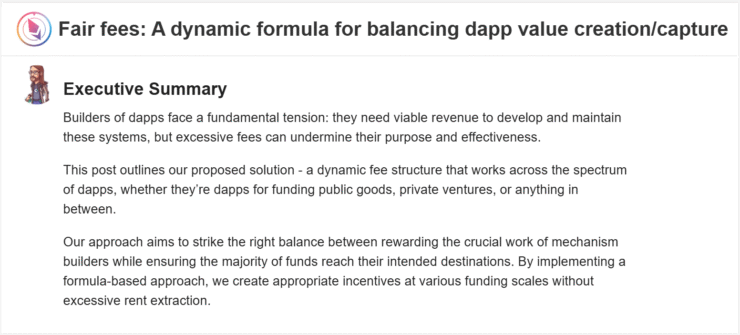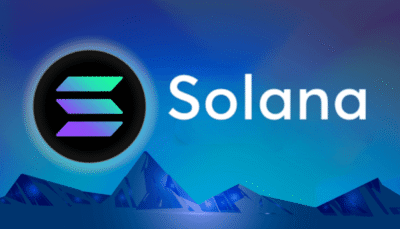Ethereum community members are advancing a new dynamic fee model aimed at easing the financial burden on smaller application developers, part of broader efforts to modernize the network’s economic structure.
On April 27, Ethereum developers Kevin Owocki and Devansh Mehta unveiled a proposal designed to create a more balanced fee environment at the application layer. The idea is to implement a dynamic structure that reduces fee percentages as project funding levels increase, fostering a more supportive ecosystem for smaller builders.

“For smaller funding amounts, the fee follows a square root function (sqrt(1000 x N)), providing proportionally higher returns to make building mechanisms for smaller pools worthwhile,” the proposal explains.
The model applies a simple mathematical formula: smaller funding pools would pay proportionally higher fees, while larger projects would benefit from significant reductions. For example, a project with a $170,000 funding pool would face approximately 7% overhead, whereas projects exceeding $10 million in funding would see fees capped at just 1%.
Owocki and Mehta emphasized that the new system would incentivize early-stage developers while scaling down costs for more established projects, promoting sustainable growth across the Ethereum application ecosystem.
Ethereum Faces Growing Competition as Solana Onboards More Developers
As Ethereum developers propose major reforms to its fee structure, the network faces mounting pressure from fast-rising competitors like Solana, which is gaining significant ground in developer adoption amid Ethereum’s broader revenue downturn.
In 2024, Solana overtook Ethereum in new developer onboarding for the first time, attracting 7,625 new developers compared to Ethereum’s 6,456, according to recent ecosystem data. Although Ethereum still maintains the largest overall developer community, these numbers signal a shifting dynamic in the battle for Web3 dominance.
Solana’s rapid rise is attributed to its low fees, faster transaction speeds, and a thriving DeFi and NFT ecosystem that continues to draw startups and seasoned builders alike. Meanwhile, Ethereum’s developer inflows have slowed, hampered by persistently high base-layer fees and ongoing scalability challenges.
According to on-chain analytics platform Santiment, Ethereum transaction fees fell to five-year lows in April 2025, reflecting reduced demand for decentralized finance (DeFi) activity and smart contract deployments.
This shrinking revenue has raised concerns among investors, leading some institutions to trim or liquidate Ether (ETH) holdings. Without clear catalysts to reignite on-chain activity, sentiment around Ethereum’s near-term prospects remains cautious.
The latest proposal to reform Ethereum’s application layer fee structure is seen as a proactive move to reassert the network’s leadership. However, with rivals like Solana gaining ground, the urgency for Ethereum to adapt and innovate has never been more critical.
Quick Facts
- A new fee structure proposal aims to support smaller Ethereum projects through a dynamic, funding-based model.
- Fees would decrease as project funding increases, with a cap at 1% for projects exceeding $10 million.
- Ethereum’s transaction fees have dropped to five-year lows due to declining on-chain activity.
- Solana surpassed Ethereum in new developer onboarding in 2024, signaling shifting dynamics in Web3 development.





